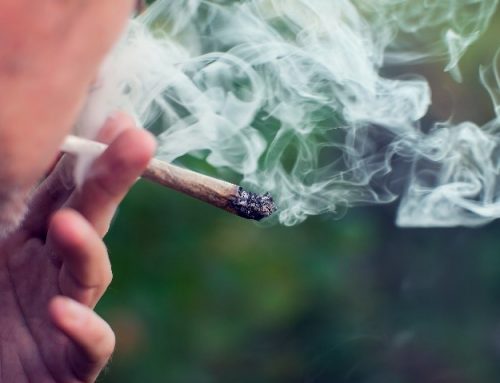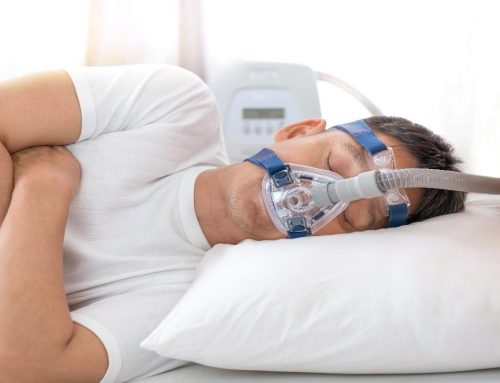 Those of us with sleep apnea, meaning you stop breathing throughout your sleep, know about the discomforts associated with the machine to keep us alive. Though in the last thirty years or so technology has helped with alleviating some of those discomforts. The CPAP machine (Continuous Positive Airway Pressure) machine forces air into the lungs when you stop breathing for those with sleep apnea. Sometimes, though, the device can have side effects that can be very straining or uncomfortable, and the humidifier should help with a lot of the symptoms.
Those of us with sleep apnea, meaning you stop breathing throughout your sleep, know about the discomforts associated with the machine to keep us alive. Though in the last thirty years or so technology has helped with alleviating some of those discomforts. The CPAP machine (Continuous Positive Airway Pressure) machine forces air into the lungs when you stop breathing for those with sleep apnea. Sometimes, though, the device can have side effects that can be very straining or uncomfortable, and the humidifier should help with a lot of the symptoms.
Most CPAP machines now either come with a humidifier attachment or built into the device. In regular use, you attach it to the device (if not contained in the unit) and fill it with distilled (sterile) water that is (usually) heated and adds moisture to the forced air. There are also Passover (cold) humidifiers in which air is blown over the water and picks up moisture without heating. Heated or not the humidifier helps prevent some symptoms you can have from the too dry air: sneezing, dry mouth, dry nose, dry throat, headache, chest discomfort, and cracked lips. Not to mention infections in the nose, throat, and sinuses can also occur from insufficient humidity. And in extreme cases, you can see tooth loss, nosebleeds, and damage to the gums. That’s not to say this will get rid of all your symptoms, but it could help alleviate them.
Do Humidifiers Help?
While humidifiers help, they are a bit of extra maintenance and work. The machine needs to be cleaned every two or three days with warm soapy water and rinsed well. Then once a week it should be sanitized in a vinegar type solution and allowed to air dry. This cleaning and sterilization are for the entire system: Mask, Machine, and humidifier. Some removable humidifiers are considered dishwasher safe but check the instructions before attempting to wash it this way. While you can use tap water for the machine, you should be using distilled or sterilized water to prevent mold and bacterial growth in the device. One other benefit of a heated humidifier is it makes the water too hot for bacterial or fungal growth. A newer accessory that helps with the humidifier is the heated tubing, without heated piping, a humidifier can cause condensation in the line which can lead to sleep disruption due to noise or water splashing into the mask. Overall it is another part of the CPAP machine that many consider essential to sleep through the night. One of the downsides of the humidifier and heated tubing is the fact that (along with the rest of the machine) it needs to be cleaned and sterilized on a regular basis. The device itself isn’t too hard to clean, but the accessories can be awkward.
Machines That Help With CPAP Cleaning
 There are some machines on the market out there to help with CPAP cleaning, but not all can be used to clean the humidifier as well. Right now there is a handful of CPAP cleaner and sterilizer machine: VirtuCLEAN, SoClean, and Lumin are some. The first two use O-Zone sterilization and Lumin uses UV stehttps://www.soclean.com/soclean/rilization. These devices are suitable for not just sterilizing the machine, but most of the accessories as well, meaning the humidifier, tubing, and mask. While they can be expensive ranging from $249.99 to $319.00, they have warranties ranging from 18 months to two years. They could save invaluable amounts of time sterilizing equipment, especially considering its purpose is maintaining your CPAP machine (an expensive piece of durable medical equipment). Not to mention they are self-cleaning meaning you can set it up, push a button, and leave it for the most part. These systems make cleaning and sterilization so much more user-friendly and convenient. Which in turn leads to more patients taking advantage of the humidifier systems.
There are some machines on the market out there to help with CPAP cleaning, but not all can be used to clean the humidifier as well. Right now there is a handful of CPAP cleaner and sterilizer machine: VirtuCLEAN, SoClean, and Lumin are some. The first two use O-Zone sterilization and Lumin uses UV stehttps://www.soclean.com/soclean/rilization. These devices are suitable for not just sterilizing the machine, but most of the accessories as well, meaning the humidifier, tubing, and mask. While they can be expensive ranging from $249.99 to $319.00, they have warranties ranging from 18 months to two years. They could save invaluable amounts of time sterilizing equipment, especially considering its purpose is maintaining your CPAP machine (an expensive piece of durable medical equipment). Not to mention they are self-cleaning meaning you can set it up, push a button, and leave it for the most part. These systems make cleaning and sterilization so much more user-friendly and convenient. Which in turn leads to more patients taking advantage of the humidifier systems.
The humidifier is technically optional, but it does offer patients the possibility of relief of side effects caused by the CPAP machine. Or possibly provide comfort to those new to using a CPAP system and need help acclimating. Even those with a built-in humidifier have the option to turn it off if they feel it is not helping, or in fact, making some symptoms worse.




 Shop
Shop



